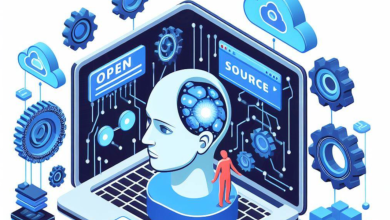
by Agnes Koh, Regional Product Marketing Manager, APAC, Jabra

Generation Z is becoming an increasingly influential group in the ever evolving 21st century workforce. What truly motivates this cohort ranging between 18-24 years old to actively participate in their workplace? How do organizations keep them happy and motivated? These are some of the questions that arise when we zero into empowering Gen Z workers.
Having just stepped into corporate life, they are now at crossroads as they find themselves struggling to adapt to the demands of remote work. According to research, over 33% said that working from home has adversely affected their work-life balance and suggest that companies provide necessary tools for them to be more efficient in performing remote work.
Unlike millennials and baby boomers, they are motivated by an empowering work culture (29.4%), growth potential (28.2%), benefits packages (11.6%), high salary and raises (15.3% as well as personal relationships with co-workers (15.55%).
Many in fact, prioritize the well-being of their mental health, with 82% citing they want mental health days which is a foreign concept to many HR practitioners. 73% cite that they in fact feel alone when it comes to remote work.
This is where, as we adapt to the hybrid work era, corporations and employers must decide if setting strict guidelines on when and where employees can work or providing true flexibility and autonomy is the best way to engage and motivate employees. Especially with more Generation Z cohorts joining the workforce and preferring the latter, reports PwC’s Global Workforce Hopes and Fears Survey 2022.
Therefore, in order to truly maintain the hybrid working balance, here are some suggestions to navigate Mondays to Fridays to allow a balance of both autonomy and also retain some semblance of flexibility.
Meet-Up Mondays
Try kickstarting the week with a collaborative team meet-up on Mondays, this can definitely be done virtually or otherwise. Success in hybrid work means rethinking collaboration, and according to a recent McKinsey’s study, good workplace performance and higher employee job satisfaction are experienced by companies that prioritize collaborative and communicative environments.

Facilitating in person meetings as well as hybrid attendees are a challenge in today’s work patterns. This is where solutions such as the Jabra PanaCast 50 are perfect for collaborative team meetings.
A Jabra study reveals that collaborative technology, according to 84% of knowledge workers worldwide, will result in a workforce that is more meeting equity friendly.
Collaboration means giving your employees a voice to show what they are capable of bringing to the table, so remember to not shut them out.
Traveling Tuesdays
It’s Tuesday, and employees might be feeling the Tuesday blues already. Terribly long and squeezy commutes to the office for instance may cause stress and anxiety, compared to those who undergo shorter commutes or no commutes at all, according to a report from the U.K.’s Office of National Statistics.
The survey findings of a McKinsey study show that more than half of the workers expressed their desire for their companies to implement a more adaptable hybrid virtual working arrangement.
In order to ensure that the hybrid experience is consistent throughout the company, regardless of where they are working, 68% of employees worldwide preferred that their employer supplied them with standardized, professional technology instead of forking out their own money for it.

According to Jabra’s research, 68% of employees preferred if they were outfitted with standardized, professional technology. The Jabra Evolve2 Series is one such device that keeps employees connected and productive with world class audio engineering.
Wireless noise-canceling audio devices like the Jabra Evolve2 Series will enable employees to maximize their hybrid workspace options without sacrificing productivity.
Third Space Wednesdays
As trust between employees, and supervisors grows, more individuals are beginning to work from locations that prove to be most convenient for them. The cafe, on the bus, while waiting for your laundry to be done, or even in your car, working from anywhere you pleased could be an absolute dream given the right tools to turn any space into a productive workplace.
Prioritizing your mental health and wellbeing comes up top on the list in ensuring that you are able to contribute effectively despite the setting you work from. According to a report from McKinsey, burnout continues to be a recurring effect when it comes to hybrid work with claims from over 49% of employees globally.
So try generating a workspace that energizes your employees and yourself as well as invest in good audio and video technology that will enable a productive third-space working.
Focus Thursdays
While working from home, the office or in a public space, background noises such as colleagues chattering, slamming doors, pots clanking in the kitchen, and so on—can distract employees.
Distraction may probably be due to the fact that one is half-focused. Try accomplishing one thing at a time and not overwhelm yourself with multiple tasks all at once.
An effective way to do this is to basically organize them according to top priority. According to a Harvard Business School review, creating a to-do list enables you to recollect tasks in hand that are needed to be accomplished and this eases the stress of having to manually remember them. So go ahead and incorporate colors or checkboxes just to make the process more fun. Additionally, using online sticky notes or google task bars can work just as well.
Home Fridays
Who doesn’t love Fridays? While still working on a hybrid mode, employees might turn down their moodiness a notch since it’s basically the start of the weekend. But despite that ‘TGIF’ feeling, there may still be a long list of back-to-back conference calls and team meetings to attend to.
According to a global survey of executives, employee experience experts, and knowledge workers, about 76% expected an increased use of video meetings as a result of the Covid-19 pandemic. Understandably, since teams do not get to see one another face-to-face during hybrid working, the best way possible to ensure connectivity and engagement is definitely to switch on the video camera.
Therefore, using the right tools to make sure we always look and feel our best is essential, and built-in cameras on our phones and laptops won’t be enough for a more long-term hybrid working arrangement.

According to research, 73% of Gen Z have cited they feel lonely while working remotely. This is where balancing workdays as well as premium video conferencing equipment such as The Panacast 20, enables them to feel included and represented during meetings.
More than ever, leaders must now embrace flexibility, by not only allowing employees to do so but also enabling them to.
Seeing how more Generation Z natives are entering the workforce, the need to grow accustomed to the hybrid work ways is important. Therefore, gradually empowering them through technology that could produce greater engagement and better retention is the way to go.




